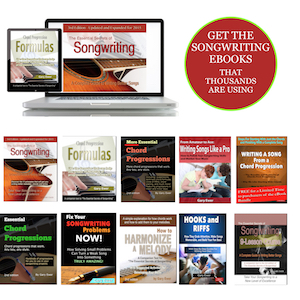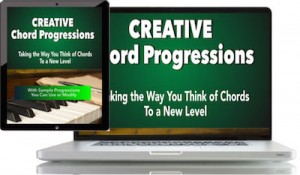Years ago, I became interested in simple computer programming, mostly in BASIC. I didn’t have great aspirations; most of whatever code I wrote was for relatively uncomplicated things. I wrote a program that helped me keep a sensible budget (yeah, that helped), and then one a little more advanced that attempted to interpret Morse code.
I did enough programming to discover one important thing: complexity in computer programming (at least for the kind I was doing) had simplicity at its core.
 Having a clear understanding of the 11 principles of good songwriting described in “The Essential Secrets of Songwriting” 10-eBook Bundle will take your songs to a new level of excellence. Get the eBooks that thousands of songwriters are using.
Having a clear understanding of the 11 principles of good songwriting described in “The Essential Secrets of Songwriting” 10-eBook Bundle will take your songs to a new level of excellence. Get the eBooks that thousands of songwriters are using.
It seemed that no matter how dazzling I could make something look on the monitor, it all came back to a set of relatively simple instructions. If you have never coded before, you might be surprised by how much can be done by so few discrete instructions to the computer.
Music is a lot like that. There’s something attractive about complexity in music, because it stimulates our ears and gets us thinking. Complexity in music makes us believe there’s more there, lurking in the background somewhere. But complexity needs simplicity at its core in order to work well.
Musical complexity is a double-edged sword. It can pull us in or it can turn us off. So if you’re really wanting to stray beyond what pop songwriting usually requires, and delve into the world of complexity (prog rock and other related sub-genres), here’s some advice:
Alternate between complexity and simplicity.
Full-on musical complexity is hard for an audience to enjoy, because they can easily get lost. But alternating between something that really challenges the mind and something that’s easier to understand has a way of pleasing listeners.
A great example of this kind of alternating between complexity and simplicity is “Close to the Edge” (1972), written by Jon Anderson (vocalist) and Steve Howe (guitarist), and performed by Yes. Please take the time to listen to the entire 19 minutes – you won’t regret it.
But here’s a breakdown of what I’m talking about regarding the alternating between simplicity and complexity.
- Opening section (“The Solid Time of Change”)… Complexity. Lots of rhythmic interplay, complex melodic phrasing… a virtuosic instrumental.
- 2’58”: Switch to simplicity. The melody becomes clear, easy to follow, easy to understand.
- 3’54”: Complexity. Though the vocal melody is clear, the rhythms are structured to be at odds with what the instruments are offering in the background.
I could go on, and as I say, you really need to listen to this. The musicianship on this album (also called “Close to the Edge”) is exquisite. And the most important lesson to take away from this long work is that alternating between something that challenges the ears and something that’s easier to understand is tremendously important in complex music.
I’ve always said that in the world of music, simplicity is more important than complexity, and I still believe that to be true. For me, the best form of musical complexity, however, is when it can be taken down to its most basic elements and seen as a layering of more simple components.
Complexity for complexity’s sake — where you can’t really discern the what, how or why — usually winds up frustrating an audience and turning them off. That’s not to say that everything you write needs to be understood by everyone; that would be unrealistic.
But complexity based on layering of simple elements gives the audience a chance to make some sense of what you’re doing and why you’re doing it. It allows them to come partway to finding the answer, and even if they don’t fully understand everything you’re writing, being able to make partial sense of what you’re writing may be enough for most.
 Written by Gary Ewer – Follow Gary on Twitter
Written by Gary Ewer – Follow Gary on Twitter
 Stuck using the same old chord progressions? You need an infusion of fresh ideas. “Creative Chord Progressions” gives you those ideas, and right now it’s FREE with your purchase of “The Essential Secrets of Songwriting” 10-eBook Bundle.
Stuck using the same old chord progressions? You need an infusion of fresh ideas. “Creative Chord Progressions” gives you those ideas, and right now it’s FREE with your purchase of “The Essential Secrets of Songwriting” 10-eBook Bundle.










